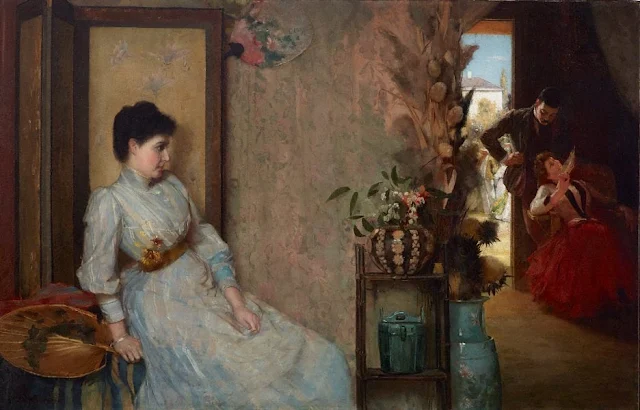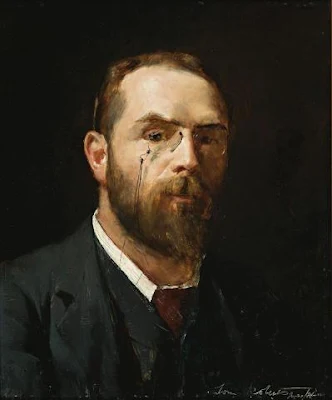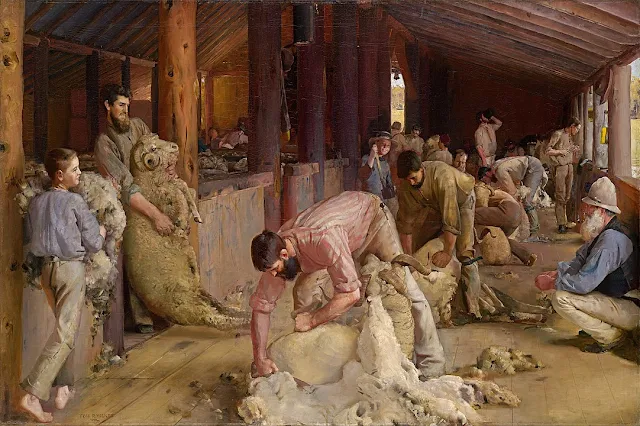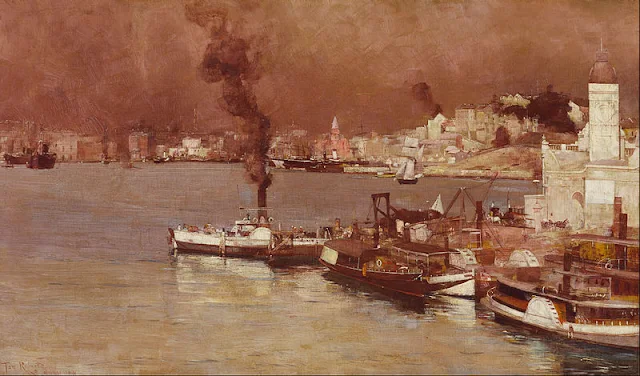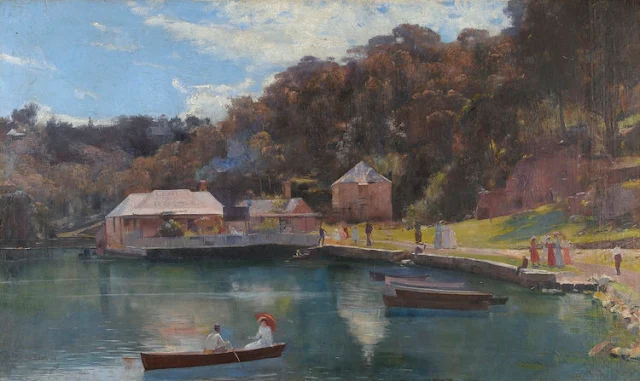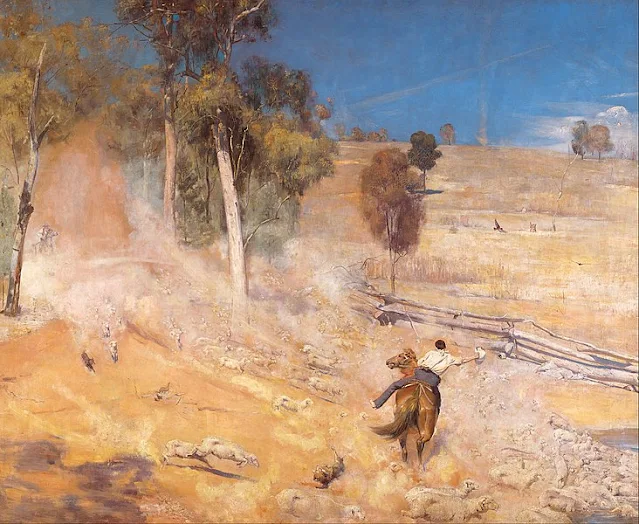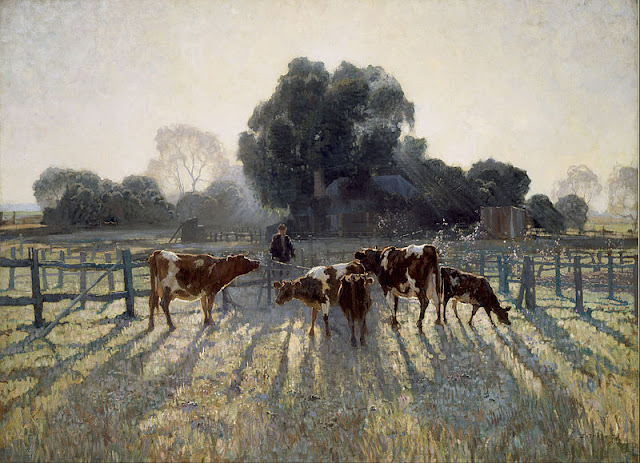Tom Roberts - Famous Paintings and the Stories Behind Them
1. Jealousy, 1889
Tom Roberts is a famous Australian painter known for his significant contributions to Australian art. He played a crucial role in the development of the Heidelberg School, also known as Australian Impressionism, which emerged in the late 19th century.
Self Portrait (Aged 30), 1886 - is a work of considerable historical importance providing a unique insight into the personality of the artist who was to be acknowledged as 'the father of Australian landscape painting'. It records a significant time both in Roberts's art and his leadership of the then emerging national school of Australian painting.
One of Roberts' most famous paintings is "Shearing the Rams" (1890), which depicts a group of shearers working in a shearing shed. This painting has become an iconic representation of Australian rural life and the country's pastoral industry.
3. The Golden Fleece, 1894
4. Shearing Shed, Newstead, 1894
Roberts was born in Dorchester, Dorset, England, although some mystery surrounds his actual birthdate: his birth certificate says 8 March 1856, whereas his tombstone is inscribed 9 March.
5. Allegro con brio "Bourke Street west", 1886
Roberts migrated with his family to Australia in 1869 to live with relatives. Settling in Collingwood, a suburb of Melbourne, Victoria. He worked as a photographer's assistant through the 1870s, while studying art at night under Louis Buvelot and befriending others who were to become prominent artists, notably Frederick McCubbin.
During this period, his mother had remarried to a man whom Roberts did not get on with. He hence decided to further his art studies, and returned to England for three years of full-time art study at the Royal Academy Schools from 1881 to 1884. He traveled in Spain in 1883 with Australian artist John Russell, where he met Spanish artists Laureano Barrau and Ramon Casas who introduced him to the principles of Impressionism and plein air painting. While in London and Paris, he took in the progressing influence of painters Jules Bastien-Lepage and James Abbott McNeill Whistler.
6. Coming South, 1886
7. Slumbering Sea, Mentone, 1887
10. Mosman's Bay, 1894
11. A break away!, 1891
12. Aboriginal Head, Charlie Turner, 1892
Through his art, Tom Roberts sought to define a distinct Australian identity and showcase the beauty of the Australian landscape. His paintings captured the essence of the Australian bush, its people, and their connection to the land. Roberts' contributions to Australian art and his role in establishing the Heidelberg School have made him a celebrated and influential figure in the country's art history.
